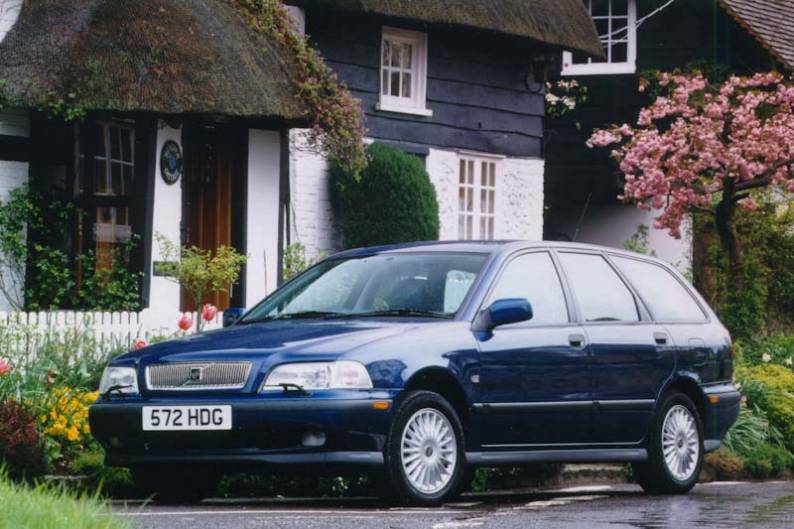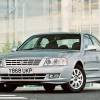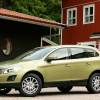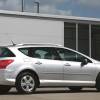
RAC sale – up to 33% off*
• Roadside cover from £5.29 a month†
• We get to most breakdowns in 60 mins or less
• Our patrols fix 4/5 breakdowns on the spot

BY JONATHAN CROUCH
Introduction
The Volvo V40 is in many ways the forgotten small estate. Whereas used buyers coo over the BMW 3 Series Touring and Audi's A4 Avant, the V40 changes hands less frequently. Why? Volvo owners seem to know when they're getting a good thing and the V40 ticks all the boxes with the minimum of flash, fuss and frustration. Even the V40's most ardent proponents wouldn't argue that it's on a level pegging with BMW or Audi, but should you feel unwilling to stump up for the German smoothies, a V40 is well worth a look.
Models
Models Covered:
V40 5-door estate: 1.6, 1.8, 1.8GDI, 2.0, 2.0T, 1.9T4, 2.0T4,1.9 turbo diesel, 1.9D,1.9D 115 [base, S, XS, SE, CD]
History
This car was originally christened the V4 alongside its saloon variant the S4. It was the S4 bit that landed Volvo in hot water when Audi executives spotted Volvo's stand at the 1995 London motor fair. Threatening legal action over the use of a title already being used on their sporting models, the Ingolstadt company held the whip hand due to their provision of turbo diesel engines for the larger 850 range, Gothenburg could hardly argue.
So the car became the V40 for the estate version. In actual fact, the term 'estate' was a rather generous one; this was one of those so-called 'lifestyle estates', without the grandfather clock-capacity of Volvo's larger station wagon models. Nevertheless, it was a lot more practical than alternatives from BMW and Audi. The V40 itself, like the 400 series before it, was built not in Sweden but in Holland where it rolled down the same production line as Mitsubishi's mechanically similar Carisma. Initially, the range was launched with just two petrol engines of 1.8 and 2.0-litres in size.
In December 1996, a turbo diesel version arrived with the same 1.9-litre Renault engine found in the Laguna and previously used in the 440 range. In April 1997, this was followed by a new entry-level 1.6-litre petrol model. In Autumn, the flagship T4 version was launched with a turbocharged 1.9-litre engine and potent performance. But Volvo hadn't stopped there. The first few months of 1998 saw two further petrol models launched - the light pressure turbocharged 2.0T and the Mitsubishi-made Gasoline Direct Injection 1.8-litre GDi, which aimed to combine diesel economy with petrol performance.
In Spring 1999, a new direct injection 1.9-litre diesel replaced the old TD unit (but wasn't much quieter). In July, the range was improved with the addition of Volvo's clever WHIPS anti-whiplash system to protect occupants in rear-end collisions.
'Phase II' models were introduced in mid-2000 with new engines and transmissions, retuned chassis, upgraded specifications and additional safety features. You'll pick these cars by subtly restyled bumpers and side marker lamps, double-lens headlamps, new tail lamps and restyled alloy wheels. Redesigned air conditioner and stereo controls nestled in a new centre console.
The petrol T4 versions had their capacity increased from 1.9 to two litres and a pair of 'common rail' turbo diesels replaced the earlier engine. All two-litre petrol engines now had the option of the V70's new five-speed automatic transmission. The ride and handling were improved by widening the front track by 18mm to allow larger tyres to be fitted and by extending the wheelbase 12mm. In 2001 Volvo launched Bi-Fuel LPG models across the V40 range. A Sport Lux model was introduced in late 2001, combining the luxury of the SE spec with the racy looks of the Sport variant. Available with all engines bar the T4, the Sport Lux's pricing saw it run into the bottom end of the premium sector.
In early 2003 a series of changes saw the 200bhp T4 and the 102bhp turbo diesel engine dropped from the range. At the same time prices were massaged downwards and equipment was boosted. All models got leather trim and those that already had it gained an electric driver's seat. Sport and Sport Lux versions also received white side repeaters, bigger 17-inch alloy wheels and sports dials. By the early months of 2004 the V40 was on its way out, making way for the arrival of the V50 replacement in the summer of the same year.
What You Get
A cultured car that in second-hand form makes a good alternative to a new Focus or Astra. The 2.0-litre petrol engine is the best bet but do try the excellent 2.0T version which is harder to find.
Three basic trim levels were offered initially - base, SE and CD with S and XS arriving later - and to those an almost endless range of option packs could be offered. Standard equipment on all models stretched to power steering, ABS, SIPS (the Side Impact Protection System), a driver's airbag with seatbelt pre-tensioners, colour co-ordinated body mouldings and mirrors, an immobiliser, electric front windows and powered mirrors.
To this, the SE versions add a glass tilting/sliding sunroof, remote control for the central locking, an alarm with deadlocks, a trip computer and cruise control. Finally, CD specifications run to 'burr wood' trim, air conditioning, leather-faced seats, electric rear windows and a better quality stereo with a CD multichanger.
What You Pay
Please fill in the form here for an exact up-to-date information.
What to Look For
Try and avoid the earliest N-registered cars; it took Volvo several months to get the quality right on a large number of them. Stretch if you can to a 2.0-litre model rather than the 1.6 or 1.8, the latter is limited by very tall gearing; it just doesn't pull very strongly in 5th.
The turbo diesel is also worth avoiding, unless fuel economy really is your top priority, in which case have a look at the rare 1.8GDI petrol model . The diesels are noisy and slow though the later direct injection engines were better. On the other hand, the 2.0T and T4 models are superb and will surprise many BMW and Audi devotees.
Replacement Parts
(approx. based on a 2.0SE) A clutch assembly is around £245. Front brake pads are around £55, a full exhaust about £400, a catalyst about £520 and an alternator around £170. A headlamp lens is about £40.
On the Road
The mainstream 1.6, 1.8 and 2.0-litre engines are willing, though the 1.6 and 1.8 lack torque. The handling too, could be sharper but is good enough to raise new standards for small Volvos. The T4 model is very quick in a straight line, but a touch turbulent in the twisty bits.
Nor has Volvo forgotten it's old raison d'être, safety. In fact, it claims to have broken new ground for cars of this class, having fitted as standard its SIPS (Side Impact Protection System) airbags in the sides of the front seat backrests. These play a crucial part in minimising side impact injuries. The front suspension too, has been designed to prevent the front wheels from protruding into the footwells in an accident - a common cause of foot and ankle injuries.
Overall
In many ways the V40 makes more sense than it's S40 saloon counterpart. Perhaps we shouldn't be surprised given this is a Volvo, but in that void between the prestige junior executive estates (BMW 3 Series Touring, Audi A4 Avant) and the upper end of the hatch-based vehicles (VW Golf Estate) the V40 reigns supreme. A sound used buy.







![Ford Mondeo MK4 [CD931] (2019 - 2022) used car review](https://d1ix0byejyn2u7.cloudfront.net/drive/images/made/drive/images/remote/https_d2yv47kjv2gmpz.cloudfront.net/filestore/5/8/1/1_beba92e409a45f7/1d6aa9c7f096d5d290c4669d8439b309/1185_6f49494a28a902a_100_100_70_c1_c_c.jpg)